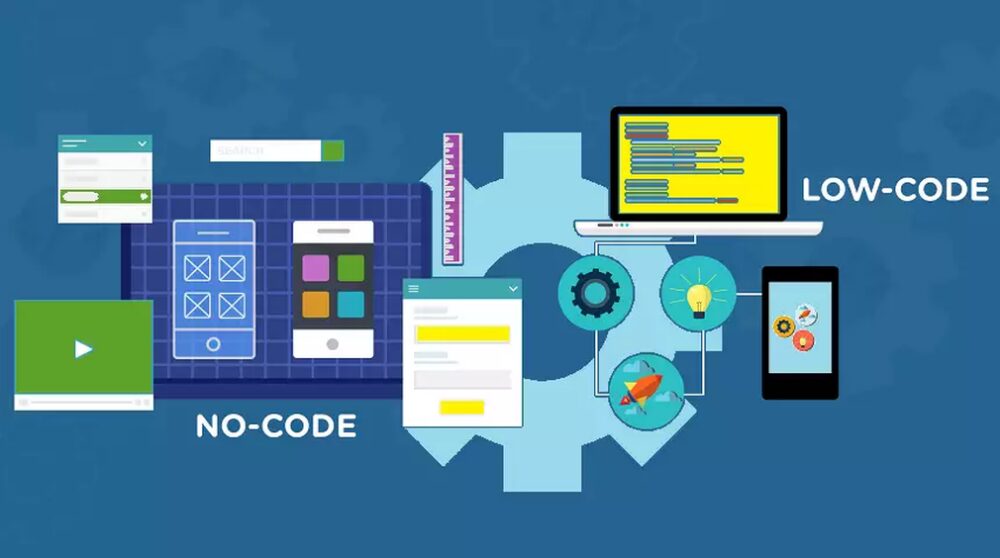As we venture deeper into the digital age, we’re witnessing a revolutionary shift in the technology landscape – the democratization of technology. This new era is characterized by the provision of tools and platforms that allow even non-technical individuals to perform tasks that traditionally required extensive technical knowledge and skills.
At the heart of this transformation are Low Code/No Code (LCNC) platforms, which are reshaping the way we approach and manage technological challenges.
The Revolution in API Integrations

Source: apipass.com.br
The world of Application Programming Interfaces (APIs) and application integration, once seen as a domain exclusively for experienced developers, is being revolutionized by low-code and no-code (LCNC) platforms. Thanks to platforms like latenode.com, the barrier to entry has dramatically reduced, allowing businesses of all sizes to harness the power of seamless integrations.
The Challenges of Traditional Application Integration
To fully comprehend the power and potential of LCNC platforms, it’s essential to cast our minds back to the challenges posed by traditional application integration processes. In the not-so-distant past, making disparate applications work together in harmony required deep technical expertise, a solid understanding of coding, and a significant investment of time and resources.
This complexity often resulted in protracted project timelines, higher expenses, and added pressure on IT teams. Not to mention, the complexity of these tasks made them exclusive to the realm of skilled programmers, thereby restricting access to a select few.
The Benefits of LCNC Platforms

Source: reisystems.com
In contrast, LCNC platforms herald an entirely new approach. They provide an alternative that is not only more efficient and user-friendly but also broadens participation in technological innovation. Here’s how:
• Simplified Processes: LCNC platforms simplify the process of application integration. They eliminate the need for manual coding by providing pre-built modules and visual interfaces, allowing users to create applications and integrations by simple drag-and-drop actions.
• Accessibility and Inclusivity: With LCNC platforms, you don’t need to be a skilled programmer to create or integrate applications. This accessibility invites a wider range of individuals to contribute to technological advancement within their organizations.
• Rapid Deployment: The simplification and automation of the development process mean that applications can be built, integrated, and deployed significantly faster than through traditional coding methods.
• Cost Efficiency: By reducing the dependence on specialized technical expertise and speeding up development times, LCNC platforms can result in substantial cost savings.
• Flexibility and Adaptability: LCNC platforms allow for quick and easy modifications. As business needs change, applications and integrations can be adapted without extensive recoding efforts.
The Power of Low-Code and No-Code Platforms
In the era of democratized technology, LCNC platforms are leveling the playing field, allowing businesses of all sizes and individuals with diverse skill sets to harness the power of technology. By bridging the gap between technical and non-technical users, these platforms are fueling innovation, enhancing productivity, and accelerating digital transformation efforts across the board.
The era of democratized technology is indeed upon us, driven forward by the power and potential of Low Code/No Code platforms.
The Difference Between Low-Code and No-Code Platforms

Source: encora.com
Low-code platforms provide an intuitive interface, along with pre-built modules and templates, reducing the need for extensive coding. No-code platforms go even further, eliminating the need for any coding at all.
They let users design, build, and deploy applications using visual interfaces and simple drag-and-drop mechanisms. Both low-code and no-code platforms provide a user-friendly approach to the often intimidating world of APIs and application integrations.
Practical Application of LCNC Platforms
To illustrate this, let’s consider an example. You run a small business that uses different software applications for various tasks – Shopify for your e-commerce, Slack for team communication, and Zoho for your Customer Relationship Management (CRM). Integrating these applications in the traditional way could mean a long, expensive development process.
LCNC Platforms and Streamlined Operations
LCNC (Low Code/No Code) platforms have become an increasingly popular choice for organizations aiming to streamline their operations without relying heavily on traditional coding methods. Through these platforms, you can design and execute workflows in which a single event, such as a new sale on an e-commerce platform like Shopify, triggers multiple actions across various applications.
For instance, it could initiate an automated message on a team communication platform like Slack while simultaneously updating the corresponding customer record on a CRM system like Zoho. All this happens without the need to write a single line of code, making the process highly accessible to non-technical users.
Custom API Integration with LCNC Platforms

Source: eleviant.com
Despite the numerous pre-built connectors and templates provided by LCNC platforms, you may still encounter instances where you need to integrate applications that do not have readily available connectors or if your integration needs go beyond the pre-defined templates. This is where the custom API integration feature of LCNC platforms truly shines.
The Limitations of LCNC Platforms
However, it’s essential to remember that LCNC platforms, while powerful and versatile, are not a panacea for all integration scenarios. They excel in situations that require quick and straightforward integrations, providing substantial advantages for businesses aiming to enhance their operational efficiency without investing heavily in traditional coding expertise.
Choosing the Right Tool for Your Needs
Nevertheless, for more intricate or bespoke requirements, conventional coding approaches may still be the best solution. This could be the case when dealing with high complexity integrations, fine-grained control over data flows, or unique business logic that cannot be efficiently addressed with low-code or no-code methods.
The Balance Between LCNC Platforms and Traditional Coding

Source: marutitech.com
Therefore, understanding your specific integration needs and determining the most efficient and effective way to meet them is crucial. It’s about finding the right balance between the speed, simplicity, and accessibility offered by LCNC platforms and the flexibility, control, and precision provided by traditional coding.
In some cases, the best solution may even involve a hybrid approach, leveraging both LCNC platforms and custom code to achieve the desired outcome.
The Impact of LCNC Platforms on Small and Medium Businesses
LCNC platforms offer a powerful tool for businesses to quickly and easily create integrations between various applications, even without extensive coding knowledge. They provide a high level of accessibility and the flexibility to create custom integrations.
However, it’s essential to assess your specific needs and the complexity of your requirements to determine whether an LCNC platform, traditional coding, or a combination of both will provide the best solution for your integration needs.
The Power and Potential of LCNC Platforms
Despite their limitations, the impact of LCNC platforms on the technology landscape is undeniable. They are leveling the playing field, making API integrations accessible to a wider range of users. This is particularly beneficial for small and medium businesses, which may lack the resources for traditional API integration development.
Conclusion

Source: financialexpress.com
In conclusion, the rise of LCNC platforms represents a significant paradigm shift in the world of API integrations. With their ease of use and versatility, they are making technology more accessible, empowering businesses of all sizes to streamline operations and improve efficiency.
The future of technology is inclusive and democratized. Low-code and no-code platforms are leading the charge in this transformation, breaking down barriers and opening up new possibilities. With the right tools and mindset, every business can harness the power of API integrations and unlock their full potential.
Explore the advantages of utilizing a Geocoding API for enhancing location-based projects.


















